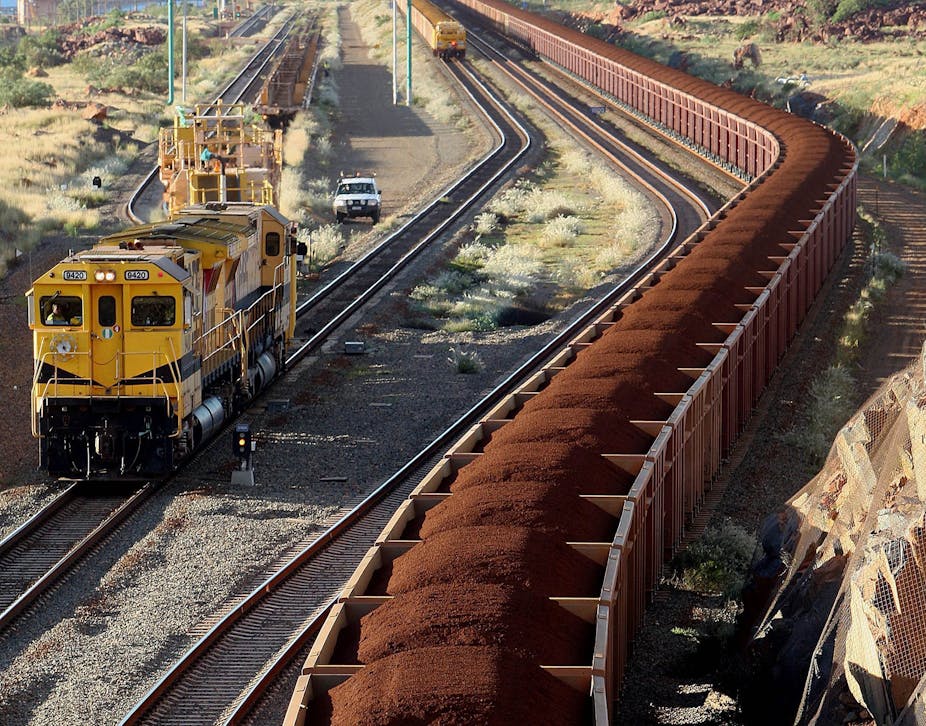There has been a massive revival of interest in Australian history in the last decade. Under Prime Minister John Howard, Australia’s military history, particularly the ANZACs, became little short of a national obsession.
We see historical fiction winning major Australian literary prizes and a continuing cultural contest about which “version” of history should be taught in our schools.
Yet as a nation, we remain remarkably ignorant about some of the most important and internationally significant historical sites on this continent.
The mine at Wilgie Mia in Western Australia – believed to be the oldest continuously worked mine site in human history - is a key example of this blindness to the history beneath our feet.
In 2002 in my role as Regional Manager for the WA Department of Indigenous Affairs I travelled with a Wajarri Elder and traditional owner Mr Ike Simpson and his son to various sites in the Murchison district.
One of those sites was Wilgie Mia. Wilgie Mia is a red ochre mining site used for many thousands of years by the local Wajarri people. The site was added to the National Heritage List on 24 February 2011 with a view to nomination for the World Heritage List in coming years.
Mr Simpson took me to various other sites associated with the Wajarri truth or reality (story) about how Wilgie Mia came to be there. The other sites included different coloured ochre sites and water holes. Mr Simpson lives in Mullewa and visits the sites whenever he can to ensure his relationship with the sites are maintained as one of the main custodians of the site.
Over recent years the Murchison district has seen growth in the mining industry including areas near the location of Wilgie Mia and other associated sites. Interestingly the mining in the area follows the tradition of the Wajarri of mining Wilgie Mia which is generally acknowledged as the oldest evidence of humans extracting minerals from the ground.
The Wilgie Mia ochre was/is valued and traded over many Aboriginal groups as its properties and deep colour were/are very much valued for use in body decorations. The finalisation of Wilgie Mia being added to the National Heritage List is significant recognition of long historical record and continuing use of ochre from the Wilgie Mia site.
Wilgie Mia joins other listed Aboriginal specific places such as Uluru and the Myall Creek Massacre site. While it is gratifying to see more sites of Aboriginal importance and significance being formally recognised there are many, sites that go unnoticed. Two such sites in Western Australia include the Massacre/Battle of Pinjarra site and the Upper Swan Bridge site.
It is an event that is well documented and what sets it apart from other such occurrences in the contact history of Australia, is that the attack on an Aboriginal campsite south of Perth at Pinjarra in October 1834 is the attack was led by the colony’s governor and surveyor-general. It was the only instance in Australia where a colony’s leader led a punitive attack on local natives.
The other site is the Upper Swan Bridge site where material from the site was carbon dated in 1980 at 38,000 years before present. The site is adjacent to a major arterial road leading to Perth and can be seen as you drive past only if you know it is there. At the time of dating it was the oldest evidence of humans in Australia.
Both these sites are significant and need to be well publicised. While the Pinjarra site is starting to become better known including a website with information from local Aboriginal people and a memorial being erected near the site despite the many years of the local non-Aboriginal people and council refusing to acknowledge the event even took place.
The attack by the colony’s governor was a strategic ploy on his part to subjugate the local Aboriginal people and dominate the relationship between the colonisers and the original custodians. This site is a valuable site in representing the contact history of the Swan River Colony.
The Upper Swan Bridge Site is a much older site and validates the antiquity and continuity of Aboriginal people in Australia. It is one of the oldest sites in Australia and important in displaying human history on the Australian continent. It is a site that should be appropriately visited by people and publicised.
Ironically the Upper Swan Bridge Site is less than half a kilometre from a recently established memorial for Nyungar warrior Yagan who was murdered in the early days of the Swan River Colony.
After being murdered he was decapitated his head smoked and sent to a museum in London. After many years of searching in England by Nyungar elders Yagan’s kaat (head) was located and repatriated and a memorial constructed at the burial site.
The Upper Swan Bridge Site and Yagan’s memorial presents a unique opportunity to develop a cultural walk for people to learn more about Aboriginal society and culture in Australia.
Given contemporary Australia is currently experiencing an enormous mining boom, we would do well to remember that extracting minerals for trade is an activity that has been taking place on this continent for tens of thousands of years.

